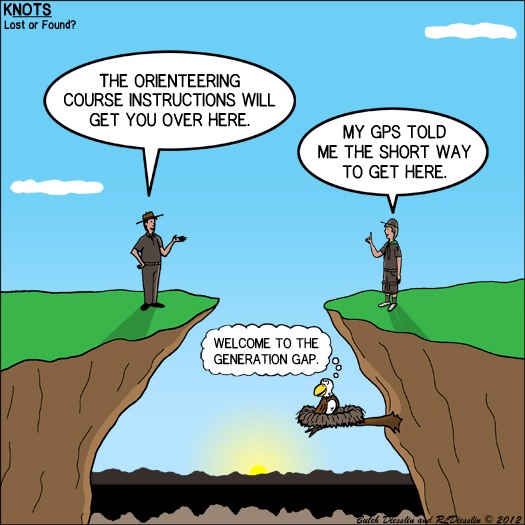As an intergenerational manager, it’s your task to bridge the different values between each of your team’s generations. And of course, don’t forget that having a mix of different generations on your team is a great chance for your company to grow and diversify. This would not be possible with only one single generation.
From Left-Right, Standing, Lisa, GenX, Faith, GenZ, Nancy, Boomer
From Left-right, Sitting,Grandma, Traditionalist, Kalev, 6months, GenZ, Nikki, GenY, Freya, Boomer
Although Generation X (those born between 1966 and 1976) and Generation Y (born between the 1980s and 2000) workers comprise just over half of the current US workforce, Baby Boomers at 41 percent, hold the majority of leadership positions, according to Lee Hecht Harrison (LHH), a leader in human resource thinking. “Baby Boomers are typically more accustomed to interacting face-to-face or using the telephone when working with colleagues, whereas younger managers are used to facing a computer screen and emailing to communicate. Boomers’ workplace tempo varies from their Gen X and Gen Y colleagues — Boomers grew up in a more leisurely time, Gen X in an age of accelerated schedules, multi-tasking, and information,” he advised.
Generational Profiles
 “We see diversity as a competitive advantage,” says Peter Alcide, President and Chief Operating Officer at LHH. “Specifically, we continually assess our workforce and offer unique training and development opportunities to individuals that are designed to unlock their full potential. We also identify leaders at all levels to participate in leadership development programs that offer coaching, education and continuous training to help them build the skills needed to lead a diverse workforce.”
“We see diversity as a competitive advantage,” says Peter Alcide, President and Chief Operating Officer at LHH. “Specifically, we continually assess our workforce and offer unique training and development opportunities to individuals that are designed to unlock their full potential. We also identify leaders at all levels to participate in leadership development programs that offer coaching, education and continuous training to help them build the skills needed to lead a diverse workforce.”
To learn how managers need to view each generation of workers, experts have developed profiles, providing clues how best companies can nurture their younger prospective leaders. “We anticipate younger staffers will need to develop faster, take on important positions and acquire leadership skills at relatively early stages of their careers,” according to the LHH report “Managing Today’s Multigenerational Workforce”.
Gen X workers “are used to work-life flexibility, and have changed jobs frequently for increased salaries, more benefits, and to climb the corporate ladder,” LHH adds.
Additionally, it will take a different style of management to elicit leadership from this generation. “Sink or swim doesn’t work with this generation — coaching, guidance and increased opportunities and responsibility are what most will respond to well. Presenting them with opportunities to go out of their “comfort zone” to enhance their management and leadership skills with coaching from the sidelines can help foster a leadership mentality,” LHH reports.
Here are some suggested guidelines for coaches, mentors and managers for resolving intergenerational conflict:
- Look at the generational factor. Is this conflict generational, or is there something else going on? Listen to what they are saying or not sharing. We need to understand each generation’s profile, attributes, communication styles, motivations. Through powerful listening and questioning, we can find out what else is going on.
- Consider the generational values at stake. Each generation is protecting a distinct set of values, and conflict may threaten these values. For example, Baby Boomers value teamwork and buy-in, while Gen Xers prefer to make a unilateral decision and move on.
- Air different generations’ perceptions. When employees of two or more generations are involved in a workplace conflict, they can learn a great deal by sharing their perceptions. For instance, a Traditional may find a Gen Yer’s lack of formality and manners offensive, while a Gen Yer may feel dismissed when this older employee fails to respect her opinions.
- Find a generationally appropriate fix. You can’t change people’s life experience. You can work with the set of workplace attitudes and expectations that come from it. So, for instance, if you have a Boomer who is frustrated by a Gen Yer’s lack of experience, turn the Boomer into a mentor.
- Find commonality and complements. When we study generations, some common and complementary characteristics emerge–and these can be exploited when dealing with conflict between them. For instance, Boomers and Generation Y employees both tend to value security and stability. Gen X and Gen Y employees place a high value on workplace flexibility and work-life balance. Gen Y and Linksters are technologically adept and committed to socially responsible policies.
- Learn from each other. How you view generational differences is based on your generational perspective.
Each generation has valuable lessons to teach the next. For example, Traditionalists and Boomers have a wealth of knowledge and tricks of the trade that younger workers need. Generation X employees are widely known for their fairness and mediation abilities. Generation Y workers are technology wizards. And Linksters hold clues to future workplace, marketing, and business trends.
- Acknowledge (and emphasize effort, not results). The New York Times bestselling book Nurture Shock, taught us the dangers of the “inverse power of praise.” Accustomed to praise by their parents in a commendable attempt to build confidence, our generation today is surprisingly afraid to tackle challenges in fear of failure and typically only willing to try activities that come easy to them. To combat this trend, highlight and acknowledge a client’s attitude, effort, and resolve.
- Be responsive. Whether we like it or not, iPhones, iPods and Blackberrys are now being used by ALL generations and these condition us to expect immediate feedback. If a client asks you a question, make your best effort to provide a response promptly. If you can’t answer in 36 hours, acknowledge their question and let them know you will answer at the next session. The client will know you are committed.
Conclusion/Summary
It is impossible to suggest a prototype for how to coach 46-85 million people.
To successfully coach and help these generations, we must learn what they want, how they feel, and how they view their world, their attributes, their motivations.
One of the keys to effective coaching is recognizing that people are all different and not to ascribe any motives, values, and goals but to understand and adjust to these differences.
As any good coach or mentor will say, it depends on the individual. The bottom line seems to be that stereotypes about millions of people in a given generation could be misleading. What counts is do you, as a coach, make the personal contact and discussion time to fully understand the uniqueness of the other person regardless of their generation?
Coaching across generations can be the link that demonstrates the value placed on development. With each person that is coached, others are impacted. The coach, mentor, manager, direct reports, stakeholders, and others in the management chain become more aware of the importance of building self-awareness, narrowing down development objectives, and the personal commitment to take action to stretch and improve. When generational differences are bridged through development as the common ground, organizations grow and become more prepared for future challenges.
Resources:
Intergenerational Management, Philippe Baumgarten, Krauthammer, Paris
Lee Hecht Harrison(LHH), a leader in human resource thinking
Lynne Lancaster, When Generations Collide: How to Solve the Generational Puzzle at Work. Management Forum Series, March 17, 2004
Organizational Coaching Across Generations: A Way to Integrate a Culture of Development, June 2009
